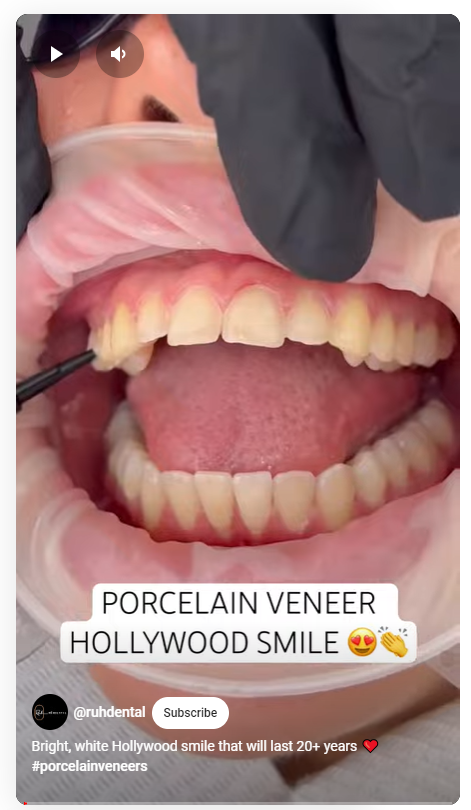Discover the key differences between composite bonding and porcelain veneers with Ruh Dental. Learn about the procedures, durability, costs, and benefits to help you choose the best cosmetic dentistry option for your smile
When it comes to enhancing your smile, two popular cosmetic dentistry options are composite bonding and porcelain veneers. Both techniques offer significant improvements in the appearance of teeth, but they differ in terms of materials, procedures, durability, and cost. Understanding these differences can help you make an informed decision about which option is best suited for your dental needs and aesthetic goals.
What Is Composite Bonding?
Composite bonding is a process where a tooth-colored resin is applied to the surface of the teeth, then shaped and polished to match the surrounding teeth. This method is often used to repair chipped, cracked, or discolored teeth, and can also be used to fill gaps or change the shape of teeth. The procedure is minimally invasive, typically requiring little to no removal of the natural tooth structure. It’s also a quick process, often completed in a single visit, making it a convenient choice for those with busy schedules.
What are porcelain veneers?
Porcelain veneers, on the other hand, are thin shells of porcelain that are custom-made to fit over the front surface of the teeth. They are primarily used to address issues such as severe discoloration, worn down or misaligned teeth, and significant gaps. Unlike composite bonding, the process of getting veneers usually requires two visits. During the first visit, the dentist prepares the teeth by removing a small amount of enamel to ensure a proper fit for the veneers. Temporary veneers might be placed while the permanent ones are being crafted in a lab. On the second visit, the permanent veneers are bonded to the teeth.
What is the difference between composite bonding and porcelain veneers?
One of the major differences between composite bonding and porcelain veneers is durability. Composite bonding, while effective and aesthetically pleasing, typically lasts between 5 to 7 years. It is more prone to staining and chipping compared to porcelain. Porcelain veneers, however, are more durable, often lasting 10 to 15 years or longer with proper care. They are also more resistant to staining and maintain their natural-looking appearance for a longer period.
What is the difference in cost between composite bonding and porcelain veneers?
Cost is another important consideration. Composite bonding is generally less expensive than porcelain veneers, making it an attractive option for those on a tighter budget. The lower cost of composite bonding, however, comes with the trade-off of reduced longevity and durability. Porcelain veneers, while more costly, offer a longer-lasting and often more aesthetically superior solution. It’s important to weigh the initial investment against the long-term benefits when considering which option to choose.
Ultimately, the choice between composite bonding and porcelain veneers should be based on individual needs, preferences, and budget. A consultation with a qualified cosmetic dentist is essential to evaluate the specific conditions of your teeth and discuss your aesthetic goals. The dentist can provide personalized recommendations and help you understand the potential outcomes of each option. By considering factors such as durability, cost, and the extent of the desired changes, you can make an informed decision that will lead to a beautiful, confident smile.
Conclusion
In conclusion, both composite bonding and porcelain veneers offer effective solutions for improving the appearance of teeth. Composite bonding is a quick, minimally invasive, and cost-effective option for minor repairs and cosmetic enhancements. Porcelain veneers, while more expensive and requiring more preparation, provide a longer-lasting and more stain-resistant solution for more significant dental issues. Consulting with a dental professional can help you choose the option that best aligns with your dental health needs and aesthetic goals, ensuring that you achieve the smile you’ve always wanted.


















